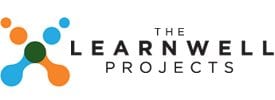 As Harry Connick, Jr’s Christmas classic goes, “It’s the most wonderful time of the year!” This is the time when students evaluate their professors’ effectiveness. Ok, it won’t be so wonderful for many teachers. It’s a safe bet that many professors will be ruthlessly verbally assaulted by their students on their evaluations. It’s become far too common for professors to read their course evaluations with a box of tissues and a bottle of wine. I am certain that professors are better educators than their evals reflect, but how do we get students to value their professors’ contributions to the teaching and learning relationship? And how can we ensure that students express this value on their evaluations, even if they struggled in the course?
As Harry Connick, Jr’s Christmas classic goes, “It’s the most wonderful time of the year!” This is the time when students evaluate their professors’ effectiveness. Ok, it won’t be so wonderful for many teachers. It’s a safe bet that many professors will be ruthlessly verbally assaulted by their students on their evaluations. It’s become far too common for professors to read their course evaluations with a box of tissues and a bottle of wine. I am certain that professors are better educators than their evals reflect, but how do we get students to value their professors’ contributions to the teaching and learning relationship? And how can we ensure that students express this value on their evaluations, even if they struggled in the course?
Necessary Struggles vs. Unnecessary Struggles
Some of the struggles students encounter are useful and necessary. For example, they may have difficulty grasping a particularly unfamiliar and complex concept. However, other struggles are unproductive and unnecessary. My interaction with a young biology major named Marcus offers an example of a common unproductive struggle. Marcus is a studious and hard-working student. However, he was unable to make a grade higher than a “D” in one of his science courses, despite spending countless hours studying each week. I asked Marcus if he thought his professor was an effective teacher. He passionately responded, “I don’t know why I’m paying so much tuition here. The teacher doesn’t teach. And, she tries to trick us on the exams.” He went on to say, “I don’t mind doing the work; she just needs to tell me what I need to know. But instead, she talks about one thing in class and none of it is ever on the test.” Marcus was needlessly floundering because he lacked a proper understanding of the differences between his professors’ and his role and responsibilities in the teaching and learning relationship. One brief conversation could have quickly allowed Marcus to overcome this obstacle. Instead, he and his peers probably expressed these and other more colorful thoughts on the professor’s evaluation. But does this mean that the professor did a poor job teaching the course? Consider this example: A couple of years ago I participated in a focus group in which students were asked to provide feedback about a very demanding course. The students said things such as, “This is the most work I’ve ever done in a course,” and “This course is a beast!” But they also said, “I learned so much in the course,” “This course made me change how I think,” and “Even though this course was hard, I would recommend it to other students.”
What was the difference between these two scenarios? In the first example, Marcus did not understand the roles and responsibilities of student and professor. He did not see growth in his struggle; rather, he believed — and I mean wholeheartedly believed — that his professor took pleasure in “tricking” him (a common misconception among college students). In the second scenario, the students viewed the work as worthwhile, even though it was rigorous and time-consuming. Recently, the university in which I work has been conducting student focus groups for our Quality Enhancement Plan (QEP), which is required by our accrediting body. While evaluating the impact of our revised First Year Experience program, my colleagues and I realized that students who took the course two years ago now rated the course very favorably being two years removed from the class. However, they are some of the same students who trashed the course and the professors in the post-course evals when these young people were first-year students. Hearing and reading the students’ positive comments about a course toward which they’d expressed hostility two years prior brought back memories of conversations I’d had with the professors who taught those courses. Some of them were horrified by their evaluations. Some cried! Others vowed never to teach an FYE course again. But looking back, it seems that the students’ initial assessments did not reflect the true value of what they’d received. Unfortunately, there are no “do overs” in evaluations. Those professors were robbed of an important component of their compensation: the feeling of reward that comes from designing and delivering a great course!
Four Rs of Teaching and Learning
With this in mind, I began thinking about how educators can get positive reviews from their students. Instructors must understand and employ four Rs that are essential to the teaching and learning relationship: Relevance. Courses must pass the relevancy “smell” test. This is when students implicitly ask themselves, What does this course have to do with me? Why is this material needed? How is this stuff going to help me? You may be familiar with the saying, “No one cares how much you know until they know how much you care.” This statement holds true in the classroom. However, caring does not equate to hand holding. It means that educators must make their course useful to students. Content is deemed relevant when it connects to students in a meaningful way. Below are a few ways to enhance a course’s relevance in the eyes of students:
- Applicability — Making content applicable to students in a personal or professional way is a common approach to making content relevant among students. This is often accomplished by providing examples or using analogies.
- Passion — Enthusiasm is infectious. Being dispassionate may be great when conducting research, but it is a killer in the classroom! We all have attended events in which a speaker’s zeal increased our interest in a topic.
- Caring — Nothing is wrong with expressing care for students. Students vary in their level of confidence. Showing that you care about a class or even an individual student can make students care about the course. Caring is not the end, but it can be a beginning to enhancing a course’s relevance.
An example of making content relevant is when I began developing workshops for our athletic teams. I anticipated that many of the student-athletes who needed help most would not be inclined to listen. So instead of covering the standard study strategies stuff, I shared with them ways that the cognitive skills they were using in sports could be applied to their academic courses. Furthermore, I showed them that exercising these skills in class could improve their athletic performance. This application made their academic courses and the skills needed to succeed take on a whole new level of importance. Not coincidentally, our athletic program has led our conference in academic performance two years running. (The following links will share more information on the institution in which I work’s recent athletic success: Article: Dumb Jock Myth Dispelled: Academic Success Helps Fuel Football Team’s National Championship Run: http://wp.me/p3GGxn-uj, PDF Documentation: http://goo.gl/AFnoP9)
Resonance: Relevance is about the message. Resonance is about the delivery. Scientists and supporters of their research have spent decades trying to push climate change into the nation’s (and world’s) consciousness. They’ve published countless articles and made their case on numerous news shows. However, these efforts have failed to move the needle. Their work was largely unknown to the public until it was put in story form in An Inconvenient Truth, which is basically a super-charged PowerPoint presentation. The same message delivered differently forever changed how people see the world. Professors have important, potentially life-shaping information to share with students. Yet, too few present their information in ways that resonate with students. Being a professor demands countless hours researching content, but being an educator requires thinking about the best ways to deliver the content.
Rigor: Contrary to contemporary belief, students want to be challenged. That’s worth repeating: Students want to be challenged. Rigor refers to work that is academically, intellectually and personally challenging. There is no sense of reward without a rigorous challenge. There is nothing worse than going to a class and getting nothing out of it. Even worse is going to a class that has a heavy workload, but the material does not stimulate growth. The best way to understand rigor is through the lens of the final “R” – Reward. Students’ receptiveness to rigor is highly dependent upon the perceived and experienced reward.
Reward: There is an old saying in public speaking: Tell em’ what you are going to tell em’; tell em’; then tell em’ what you just told em’. There is a lot of wisdom in this saying. Let’s explore this a bit. Tell em’ what you are going to tell em’ — Translation to academic teaching: Create your students’ expectations. Educators are much more likely to meet students’ expectations when they create them. In other words, plainly and concisely communicate to students what they can expect to get out of the course. This should not be limited to the content; it should encompass the dispositions, intellectual skills and cognitive functions that the course is designed to assess and expand. Consider a concise, well-timed statement such as the following:
- In this course (Pathophysiology), we will explore how disease disrupts the normal structures and functions of the human body from the cellular level throughout all of the affected systems. This means that you will need to be able to recall abnormal physiological disorders, but more importantly you will be primarily assessed on your ability to properly analyze the underlying signs and symptoms.
- Or, you will be reading Othello in the course. While you will need to know important information, such as the characters, settings, and the plot, you will be assessed on your ability to pick up on themes throughout the story and what these themes tell us about the world then and the world now. I will be looking beyond your recall abilities to your meaning-making skills. Keep this in mind as you study the book.
Now that our FYE professors deliberately share with students what they should expect in the course, their evaluations are more favorable. This isn’t rocket science; it is a matter of calibrating students’ expectations.
- Tell em’ — Throughout the course, in addition to covering the content, strategically and explicitly help students connect the content being covered to the skills and dispositions that were foretold in the beginning of the course.
- Tell em’ what you just told em’ — Translation: Help students connect the dots between where they were before the course, what has transpired throughout the term and the knowledge and skills they should have gained as a result of the course. This serves two purposes: 1) Students who performed well will appreciate the growth they’ve experienced, and 2) students who did not perform well will at least hear a summary of the educational experience that was provided.
The reward is a bottom-line metric. It’s not a coincident that the word “evaluation” has the word “value” at its root. By making content relevant, delivered in ways that resonate, and ensuring that it is equally rigorous and rewarding, educators can be assured that, after they’ve finished the course, more students will deem the course and their teacher favorably. Then professors can cry tears of joy and pop champagne in celebration! It truly will be the most wonderful time of the year!


Thank you! After falling on my sword to put together cool university courses, I’ve been bruised by my evals and this is a really helpful post- you are relevant! Thank you for the advice!
What an interesting post, Leonard. The blog and the entire Learnwell Project is quite impressive. You’re doing some great work!
Thanks Leah. It’s good to know that future teachers find it useful!
Thank you, Leonard, for another helpful and informative article. I read as many as I can and annotate the stew out of them all, then add what I have learned and add it to my teacher tools. I am the reading specialist for my school, but I also am an adjunct instructor of developmental reading. When wearing my reading specialist hat, I create workshops that I take into classrooms across the disciplines as well as my own. One of the first things I introduce to all students is my school’s philosophy of teaching, the Teacher-Learner Continuum. Under the TL Continuum, in the beginning of a student’s academic experience here, the T (Teacher) plays a larger role than the L (Learner); in fact, the L is quite small (dependent upon the T for his/her learning), but as the L progresses and picks up study strategies and hones his or her thinking and studying skills, the T shrinks and the L gets larger. Along the student’s academic continuum, the L learns how to become less dependent on the T for his or her learning. At the end, and providing the L has accepted his/her responsibility, knows how to learn and think critically. He/she is an independent learner – a giant of an L, and the T is more of a facilitator. This philosophy tracks well, I think, with providing students a way to grasp the roles of teacher and student. When I had a talk with a student who wasn’t doing his part, he owned up. “This is on me, Ms. Soff,” he said. “I wasn’t doing what I was supposed to.”
Students in my classes (even if they’re only “mine” during an in-class workshop), are introduced to the T-L Continuum, the term “metacognition,” and Bloom’s taxonomy – all to help them understand their role and take responsibility for it.
In my developmental reading classes, from the very first day, I want the students to know that ENC1101 and humanities and psychology and history and many other classes follow this one. They see sample assignments for other courses – samples left at the printer by unknown students. They hear comments like “You will create your own main idea and supporting details in ENC1101 and history and whatever class you take.” Upper-level courses are mentioned every class. I select readings from among those I used when I taught ENC110, and I tell them that they are. I assign projects that are beyond creating an end-of-the-semester group or individual Powerpoint. Last semester, my students tackled a 4-week project that began with an anticipation guide on the Vietnam War followed by reading chapter 1 of Tim O’Brien’s “The Things They Carried.” We viewed a 20-min. video of a soldier who survived a massacre of an ill-advised mission and looked at images of soldiers and of the things they carried. We discussed the less visible things they carried – like responsibility and depression. And every day before class started, students entered with Vietnam War era music playing (nothing like a little Creedence!). The rest of the project consisted of two major pieces: creating character maps for each of the characters in ch. 1, responding to 2 out of 5 writing prompts using the correct format (MLA) required in ENC1101, and a vocabulary piece (definition and sentence citation).
Although the current crop of students (for the most part) do not have direct knowledge of the Vietnam War, almost every knows (or knew) someone who is (or was) in the military. One was a veteran, and his voice, his perspective, was valued by the other students. We connected this reading and the project to what is happening today militarily, and we connected it to the past through discussion, the magic of Powerpoint, and images of soldiers and the things they carried in WWII.
Students reported that they felt the “Things They Carried” project was challenging but really really interesting. They bought in right from the beginning of the semester because I gave them a choice: the curriculum could be presented in the department’s FCAT (standardized testing) way or the Ms. Soff way, and, I said, “I guarantee you the Ms. Soff way is a whole lot more interesting.”
At the beginning, I gave a skills pretest, which allowed me to know how and where to focus the skills part of the course. I followed a sort of “flipped” classroom in that the skills readings were done at home with periodic quizzes, which determined whether we would move on to another “skill” or revisit a skill/concept that needed a little extra support. I did not lecture on skills. (Skills drills kills.)
Last week, I ran into one of my “project” students. He gave me a big hug and said that he is in ENC1101 now. “Did I prepare you well for ENC1101?” I asked. He said, “You sure did! Thank you!” There was his reward – and mine.
I see that I have written a book here. Sorry. Thank you again, Leonard, for your ongoing support to all educators!
Maggie, thanks for the very informative post! It’s great to see an institution with a strategic approach to transitioning students to becoming self-directed learners. Since learning is a human experience, students come equipped with the tools to learn. The problem is that no one ever shows students how they’ve been learning all throughout their lives, and how this can be extended to the academic context. Keep up the good work!
I appreciate your blog. You are providing an excellent perspective in the field of teaching and learning. Please keep it up!
Thanks Carol! I truly appreciate the encouraging remarks.